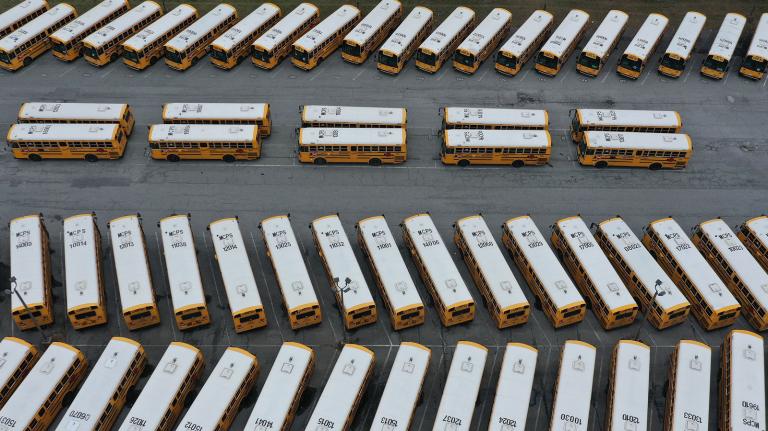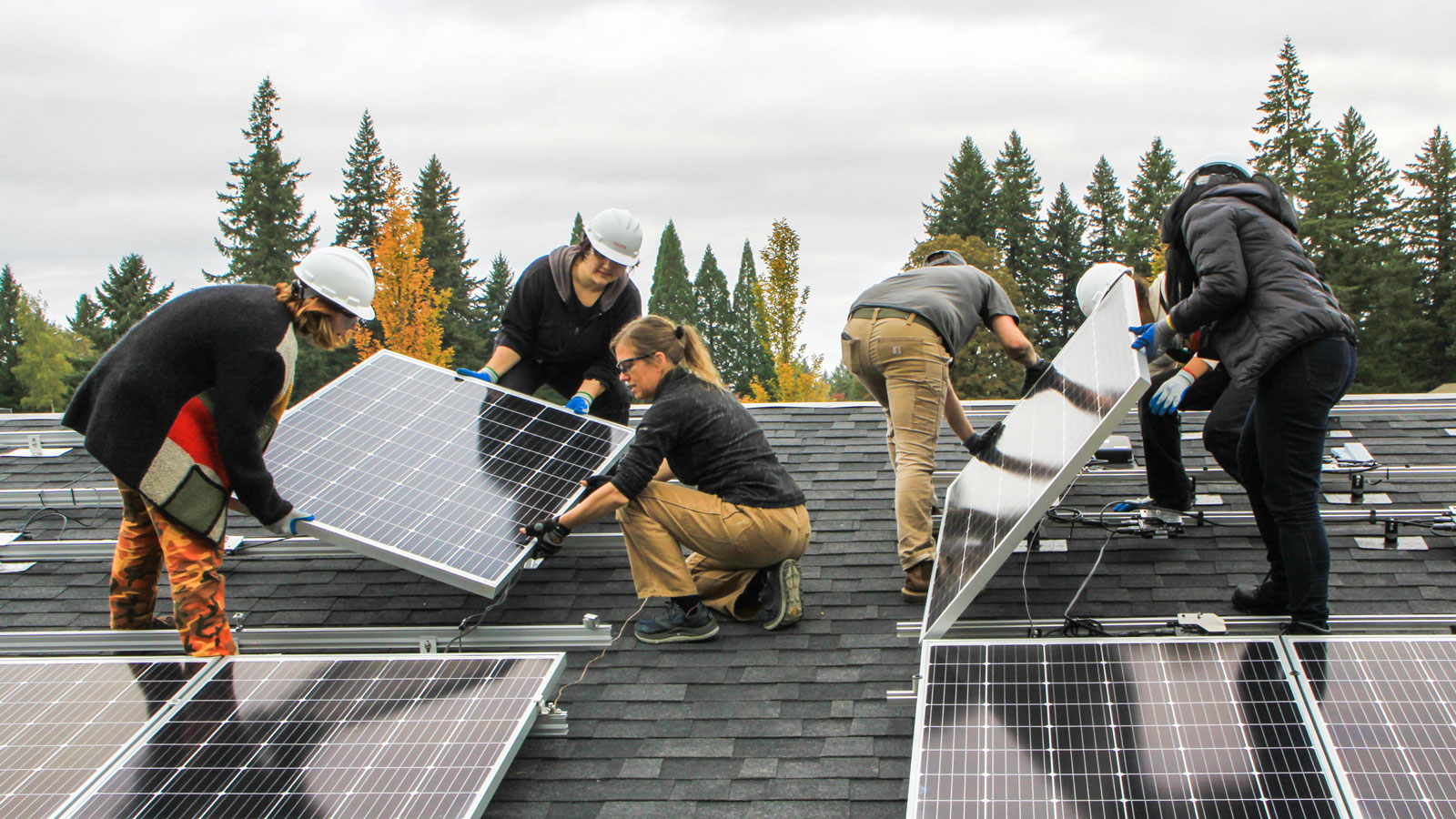Neha Misra is the inaugural global ambassador of the solar workforce development nonprofit Remote Energy and a Public Voices Fellow on the Climate Crisis with the OpEd Project in partnership with the Yale Program on Climate Change Communication.
I’ve been working in the solar industry across three continents for nearly 20 years. I’ve been a part of community installations, and I’ve supported women in the remote Indian islands of Sundarbans as they’ve expanded their solar charging infrastructure. I’ve also worked with two award-winning, U.S.-based nonprofits that bring this renewable energy to under-electrified areas around the world. One of them is We Care Solar, whose suitcase-sized portable power generator was named one of Time magazine’s best inventions in 2019. Yet it took 10 years before I met a female photovoltaic installation professional.
Women comprise only 26 percent of the U.S. solar workforce and no more than 30 percent in any clean energy sector, a statistic that includes admin and other non-technical roles. Management is the least diverse; nine out of 10 solar executives are white, and eight out of 10 are male. If we look at jobs like photovoltaic installers — one of the fastest-growing jobs in the United States — just 4 percent are women and fewer than 10 percent are Black, Native American, or Asian.
The solar industry isn’t significantly more or less diverse than other science, technology, engineering, and math jobs in the country, but given that solar could generate as much as 40 percent of the nation’s electricity by 2035 (up from 3 percent today), there’s a huge opportunity to build a sector that better reflects the climate justice goals the clean energy industry espouses.
Much research shows that diversity gives companies a competitive advantage and long-term success. A 2018 McKinsey report suggests that diverse companies are one-third more profitable than their peers, and that greater diversity results in stronger collective problem-solving and innovation of new technologies.
One of the first steps toward making a company or industry more diverse is keeping track of who is, and isn’t, in it. The gold standard for this is the EEO-1 Report framework for diversity reporting, which requires data on gender, race, and ethnicity for companies with over 100 employees. The U.S. Solar Diversity Study reports that more than 60 percent of solar companies don’t track diversity statistics, offer mentoring opportunities, or strategize to increase underrepresented hires. Companies also can seek a diversity, equity, inclusion, and justice (DEIJ) certification through the Solar Energy Industries Association.
Solar’s projected growth means the workforce will need to reach two to six times its current size to meet demand, so we also must diversify the pipeline. Registered apprenticeship programs have a proven track record of doing this in high-growth industries spanning technology, construction, manufacturing, and energy. Employers benefit from financial incentives and less turnover, and trainees enhance their lifelong earning potential. But the solar installation occupation currently is not recognized as “apprenticeable” by the U.S. Department of Labor. This means employers can’t develop the workforce they need.
That is hopefully changing, but meanwhile, states can take the initiative. Florida, for one, offers a model with its subsidized registered solar installer apprenticeship program — the first state effort to prepare people for the federally defined occupations of “solar photovoltaic installer” and “solar thermal installers and technicians.”
The Department of Energy’s Office of Energy Efficiency and Renewable Energy can also take the lead on making solar mentoring, training, and apprenticeships more accessible to BIPOC and women. This can be done by supporting a network of training organizations with stipends, health insurance, and educational allowance to work with recent graduates. Currently, new programs like the $6 million Clean Energy Innovator Fellowship Program hosted by utilities and grid operators don’t particularly focus on inclusive solar workforce development.
Community-led solutions already are underway to make America’s solar workforce more diverse and inclusive. To meet the rising demand, such efforts need greater public and philanthropic investments. Remember the female installer I mentioned? Her name is Carol Weis, and she cofounded Remote Energy, a nonprofit based in Tacoma, Washington, that is making technical solar training more accessible for women new to the field and those ready to become solar educators. Other initiatives, like Solar Energy International’s Women in Solar Power program and the Rising Solar Fellowship run by GRID Alternatives and Women of Renewable Industries and Sustainable Energy, are providing mentoring opportunities for women and underrepresented gender identities.
A network of Indigenous leaders and organizations, such as Red Cloud Renewable in Pine Ridge, South Dakota, train installers and educators to advance energy sovereignty on tribal lands. In Flagstaff, Arizona, Native Renewables’ Hozho Homes Program provides Navajo and Hopi families with the skills to install, operate, and maintain off-grid photovoltaic systems.
Another way to boost diversity is for each of us to consider a career in (or switch to) solar. The industry offers rewarding career opportunities and competitive wages. Entry-level installation jobs require only a basic high school diploma or equivalent degree, and compensation increases as workers advance and acquire more training. You can use the Interstate Renewable Energy Council Solar Career Map to explore pathways.
My lived experiences have shown me that solar training programs designed by and for women draw more participants and better learning outcomes. A decade ago, the solar photovoltaic class I attended in a California backyard changed my relationship with power tools (from being one rooted in fear to one rooted in confidence). It helped me build lasting friendships with women who were not afraid of an electric circuit, and inspired my work bringing community solar solutions to millions. This is why I support Remote Energy’s programs for women as the organization’s first global ambassador. Our world needs more shared power.
Whether you are a young climate activist seeking a rewarding career aligned with the well-being of people and planet, a mid-career professional seeking a shift to make a difference while making a living, or a transcontinental immigrant woman like me who is excited by the prospect of building new power structures across borders, we can grow with solar, and solar with us.
We need more solar power to make a quick transition to a decarbonized American energy system. However, speed should not be the cost of solar equity. Only when a solar revolution is rooted in justice as a living practice will it be a “revolution” well worth its name.
The views expressed here reflect those of the author.



